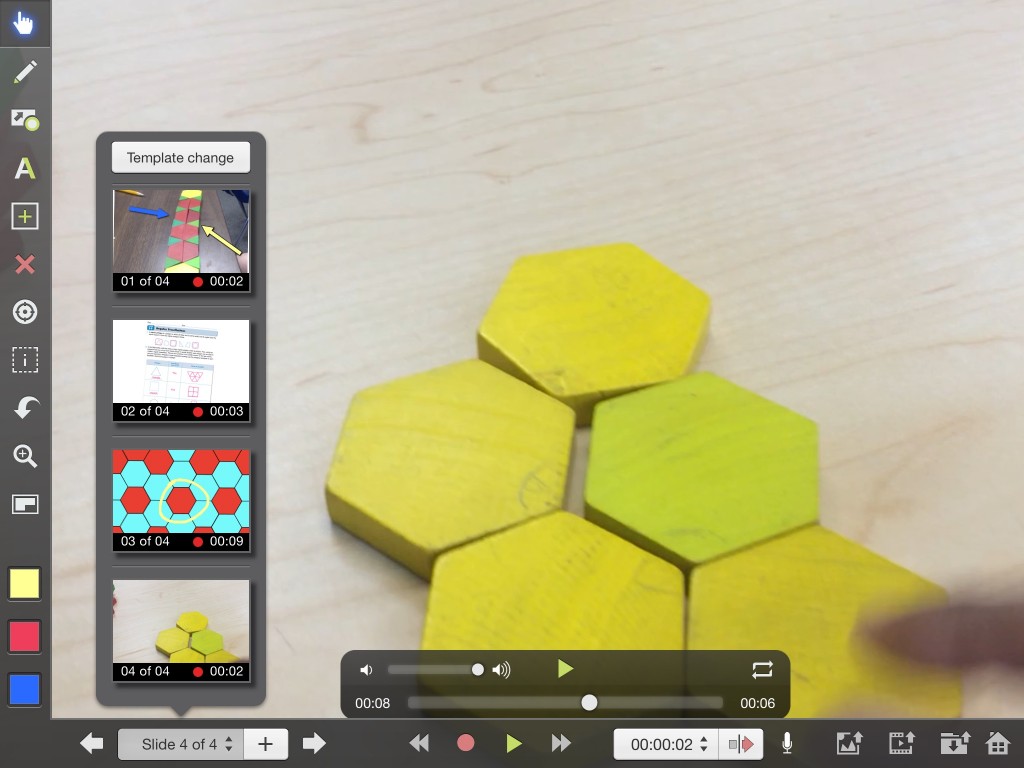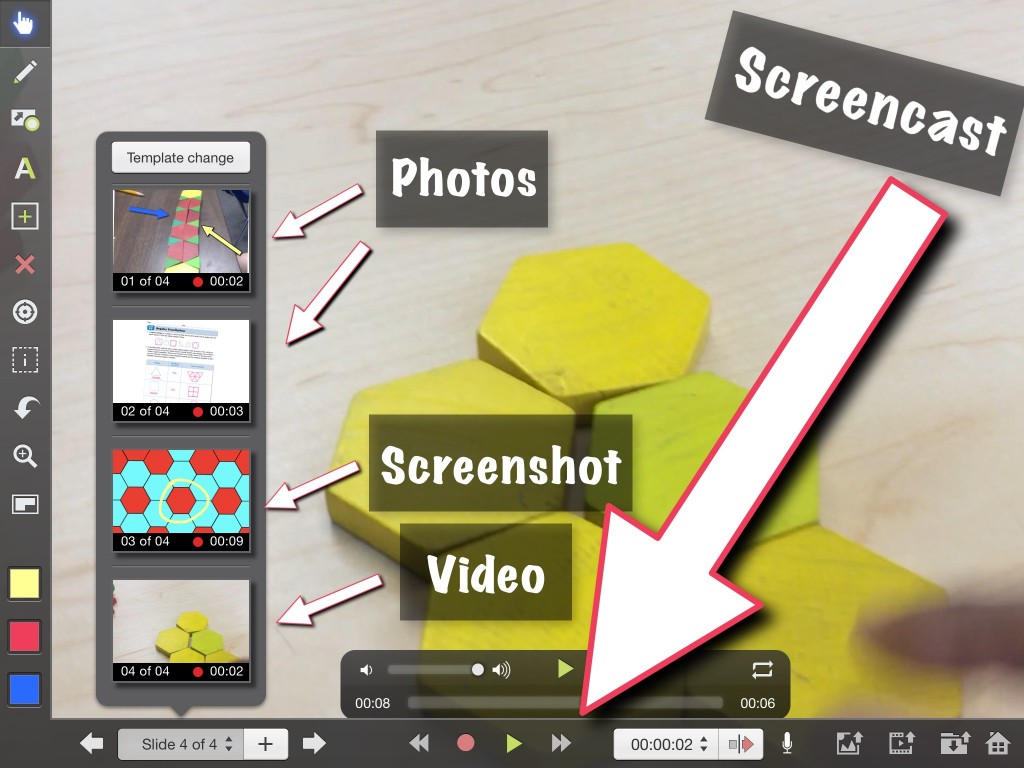This is a guest post from iPad Summit San Diego featured presenter, Dr. Reshan Richards (@ReshanRichards). It first appeared on EdTechResearcher.
I have recently been writing about the qualitative formative assessment toolkit (QFAT for short) which is something that has come out of my research on and practice with mobile devices, multimedia, and formative assessment. It is comprised of four media authoring approaches available on most smartphones, tablets, and laptops: making photos, taking screenshots, filming videos, and screencasting.
Each of these approaches allow teachers and learner to capture and create moments of learning, excerpts of understanding, and reflections of experience. Let’s pretend to be one of my 5th grade math students from last year participating in an activity about tessellating patterns. The activity was to figure out what individual shapes, when arranged in a flat pattern with touching sides, formed a closed tesselating patter (a regular tessellation). This activity involved using physical manipulatlive objects (pattern blocks), a piece of paper to document findings (journal workbook page), and NCTM Illumination’s Tessellation Creator website as resources for engaging in the experience of exploring regular tessellation. Here’s how the QFAT could be applied to this activity with an iPad.

Making Photos:
After making one or two tesselating or non-tesselating pattern with the pattern, make a photo of the arrangement(s). After findings are recorded in the journal work book, make a photo of the completed page.
Taking Screenshots:
After creating one or two tessellating and non-tessellating patterns on the Illuminations website, take a screenshot of the pattern(s).

Filming Videos:
Ask a classmate to film a 10-15 second video of you creating a tesselation, or ask a friend if you can film them as they are making theirs.
Screencasting:
Import the photos, screenshots, and video into Explain Everything or iMovie and add a voice over and annotations to describe the things you photographed, took screenshots of, and filmed. Export the video and share it with the teacher.
That final screencast does not just contain the products of the learning experience (though to a degree the screencast is a product) but also insight into what the student was thinking or how they describe the processes he or she went through while doing the activity. It does not have to be perfect or pretty or lengthy. It is just an authentic and representative artifact of learning.

Don't miss the chance to hear Reshan Richards LIVE at iPad Summit San Diego! Registration is still open - ettipad.org

